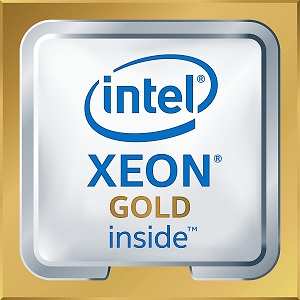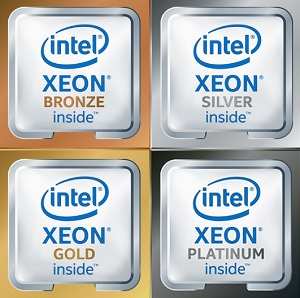Intel Xeon vs. Core i7: How To Choose The Best CPU For Your Business and Home

Earlier this year, Apple unveiled a redesigned Mac Pro desktop computer that boasted increased processor and graphics capability. Intel Xeon CPUs are the key components of the new Mac beast. Unnamed Intel Xeon W processors with up to eight cores running at 3.5 GHz (perhaps the Xeon W-3223) are among the new processors (likely the Xeon W-3275 or W-3275M).
The new Mac tower sparked a debate Times Read office over whether or not it’s worth it to include one of these multicore behemoths in your next PC.
Apple’s new workstation isn’t feasible for most of us, let’s be honest. The new Mac Pro has a starting price of $6,000 and goes up to “small business financing.” They also have limited upgrade options due to proprietary connections, and they lack the enormous gaming potential of Windows-based computers, which is another downside.
The question is, should you abandon the convenience of Core i7 and i9 CPUs in favor of Xeon?
What is Intel Xeon Processor (CPU)
This is Intel’s business workstation and server CPU range, and it is primarily geared towards business users. In general, these CPUs have more cores than ordinary PCs, but their clock rates aren’t as fast as those of the Core I7 and Core i9 processors.

Its clock rates range from 2.5 GHz to 4.40 GHz with a boost to 4.60 GHz under specific conditions, for example. Consider the Core i9-9900K, which has a 3.60 GHz base clock and a maximum boost speed of 5 GHz. The Core i9-9900clock K’s speeds are clearly superior than those of the Core i7-9700K.
On the other hand, there’s the Xeon W-3223. Similarly to the Core i9-9900K, this processor has eight cores and 16 threads, but its clock speed is 4.0 GHz, and its MSRP is roughly $250 more. In summary, Xeon clock rates might be close to or much below those of a top-tier Core component.
When it comes to power demand and heat generation, Xeon is the clear winner. Intel’s Xeon processors are far more power-hungry, and they run hotter as well. Its thermal design power (TDP) is 205 watts, for example. The W-3223, on the other hand, has a TDP of 160 watts. In contrast, the i9-9900K has a TDP of 95 watts.
You can come close to the Xeon with the “prosumer” Core i9-9960X, which has a TDP of 165 watts and 16 cores and 32 threads. Even yet, the great majority of Core i7 and i9 components aren’t designed with these increased power and heat issues in mind.
Why Intel Xeons Are Expensive?
In general, Xeon CPUs tend to have a lot more business-critical technologies built in. The memory of these devices, for example, is error-correcting code (ECC) memory, which avoids data corruption and system crash. Due to the fact that home PCs are quite dependable, few home users feel the trade-off worth it.
Even a few hours of downtime can cost a firm more than ECC memory. Financial trading is a good example, when transactions occur at a rate that is beyond the comprehension of most individuals. These companies lose a lot of money when their computers go down or their data is corrupted, which is why they’re prepared to invest in specialist technology.
In addition, Xeon CPUs support far more RAM than Core processors, and they have many more lanes on which to attach expansion cards.
Adding many cores, ECC, a large number of PCIe lanes, and large amounts of RAM will increase the price.
Intel, on the other hand, charges a premium price for Xeon because it can. As a rule of thumb, business-grade equipment is more expensive than consumer-grade equipment.
Should You Buy Intel Xeon For Home PC?
A lot of cores with acceptable clock rates (in certain circumstances) and lots of PCIe lanes are appealing features of the Intel Xeon processor. Surely a bespoke cooling solution can be devised to address the power issue.

Maybe, but In reality, Xeons aren’t the greatest solution for a home power user who wants to maximize performance.
As for CPU-intensive tasks or 24/7 uptime, Xeons are worth considering. Spending money on games, on the other hand, yields practically little return.
Early in 2019, when critics were evaluating the $3,000 Xeon W-3175X “desktop” CPU, most conducted productivity testing, where the Xeon usually performed well, but then ran gaming benchmarks versus Core CPUs. With just a few exceptions, the Core i9-9900K consistently outperformed the Xeon W-3175X. Against a 28-core, 56-thread CPU, no less!
However, for current gaming, those cores were less significant because the i9-9900higher K’s frequencies (clock speed) were more relevant than cores at one point. Although there are some CPU-intensive games where having more cores pays off (most gamers should have at least a four-core, eight-thread CPU), clock speed paired with IPC (instructions per cycle) is typically the most essential metric.
If you have the resources, you can overclock the Xeon W-3175X, which may push it above the i9-9900basic K’s performance. Because there are fewer xeons that can be overclocked in the W-3175X, Core components have an advantage.
In other words, when the Core i9-9900K costs less than $500 and the high-performance Xeon costs many times as much, Xeon doesn’t make sense for gaming.
As for now, the vast majority of gamers will continue to use four-core computers.
Purpose of Intel Xeon Processor (CPU)
Workstations and servers are the main purpose of these processors, according to Intel’s marketing. Three-dimensional artists, game developers, and video editors are the primary target audiences for even the “desktop” Xeon W-3175X.
Certain processors are ideal for professionals and “prosumer” enthusiasts in these disciplines.
For the rest of us, Core i7 or i9 processors are the way to go.
Cooling Solution for Xeon:
Known fundamentally for its tranquil air cooling frameworks, Noctua on Thursday presented a setup of coolers for Intels Xeon W-3300 Ice Lake-64L processors in LGA4189 bundling. The family incorporates four coolers with 90-mm, 120-mm, and 140-mm fans and are planned both for workstations and workers.
As usual, Noctua guarantees that its coolers unite elite and calm operation. All of Noctua’s coolers for Intel’s Xeon W-3300 Ice Lake-64L processors in LGA4189 structure factor share the company’s conventional plan philosophy: they highlight huge aluminum radiators with many flimsy balances that are punctured with different nickel-plated copper heat pipes that are fastened to the copper base.
Depending in precise model and its presentation necessities, the cooling frameworks are furnished with a couple of fans that are intended to be just about as peaceful as could be expected. All coolers accompany pre-applied warm compound. Times Read’s arrangement of LGA4189 coolers incorporates the accompanying models:
The NH-U14S DX-4189 enormous pinnacle cooler furnished with six warmth pipes just as a solitary 140-mm NF-A15 PWM fan that twists at 300 RPM ~ 1500 RPM to create a 140,2 m³/h wind current while delivering a greatest acoustical commotion of 24.6 dB(A).
The gadget weighs 797 grams and is focused on huge workstations with a lot of room and great airflow. The NH-U12S DX-4189 major pinnacle cooler with five warmth pipes just as two 120mm NF-A12x25 fans that turn at 450 RPM ~ 2000 RPM to create a wind stream of 102.1 m³/h just as a most extreme acoustical clamor of 22.6 dB(A).
The cooling framework is the most impressive in Times Read’s arrangement of coolers for LGA4189 processors and is planned for exemplary workstations with traditionalist plan that request some headroom as far as cooling execution. For such machines, two fans may really be a benefit since on the off chance that one comes up short, the other will keep on working. The gadget weighs 1018 grams.
The NH-U9 DX-4189 is a moderately reduced pinnacle cooler for more modest workstations. The unit is outfitted with six warmth lines and two NF-A9 fans that twist at 400 RPM ~ 2000 RPM to produce a 62.6 m³/h wind stream while emanating a 22.8 dB(A) commotion level. The item weighs 895 grams.
The NH-D9 DX-4189 4U is basically a rendition of the NH-U9 DX-4189 that includes an alternate heatsink with four warmth pipes is upgraded for 4U worker machines. This model offers observably better, however is significantly noisier (up to 30.6 dB(A)) since its NF-A9 fans turn at 400 RPM ~ 2500 RPM to create a 96.3 m³/h wind stream.
In any case, since we are managing a cooler for 4U workers, not many individuals are really going to head these fans.
All the new coolers are transported with Noctua’s SecuFirm2 mounting systems highlighting hostile to shift, Torx T30 PEEK nuts and the LGA4189-4 (P4) CPU transporter outline. A Torx T30 mounting apparatus is incorporated.
For clients that as of now have Noctua’s past age coolers for Intel’s CPUs in LGA3647 structure factor, the organization offers the NM-i4189 mounting pack that will make these gadgets viable with the most recent processors and motherboards.
